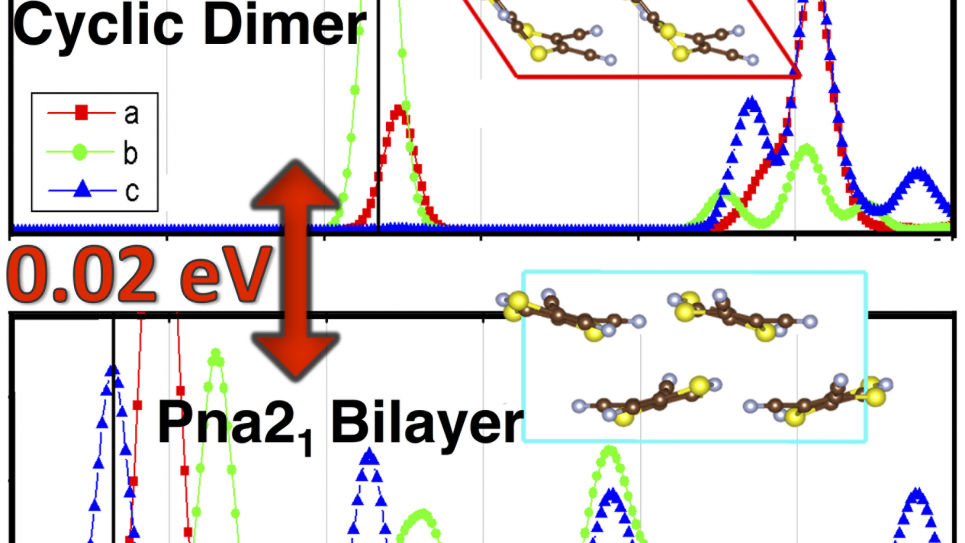
Materials and Interfaces for Organic and Hybrid Photovoltaics
This project aims to advance the efficiency of organic and hybrid solar cells through computer-aided discovery and design of new materials and interfaces. The team’s broadly applicable quantum mechanical framework will advance the field of computational materials science and broaden the community of researchers capable of using leadership computing resources. Their first-principles approaches are based on density-functional theory (DFT) and many-body perturbation theory (MBPT), which describe these materials and interfaces on the most fundamental, quantum mechanical level at which light-to-energy conversion takes place and on which structure-function relationships are established.
This international team of experts will conduct a large-scale computational campaign to derive structure property relations and design rules for crystal forms with high carrier mobility and high singlet fission efficiency; carrier harvesting interfaces with effective charge transfer and transport behavior; and hybrid perovskites with reduced toxicity and increased stability.
To search the infinitely vast configuration space of materials structure and composition, they will integrate the proven DFT code FHI-aims with three structure search methods, implemented as open source codes. These are based on different approaches to global optimization, namely genetic algorithm, basin hopping, and Bayesian optimization.
This research will advance the current state-of-the-art in first-principles simulations and allow researchers to reveal design rules for organic and hybrid materials with desired properties. The theoretical understanding developed in this project will catalyze the emergence of new design paradigms for next-generation solar cell technologies.
